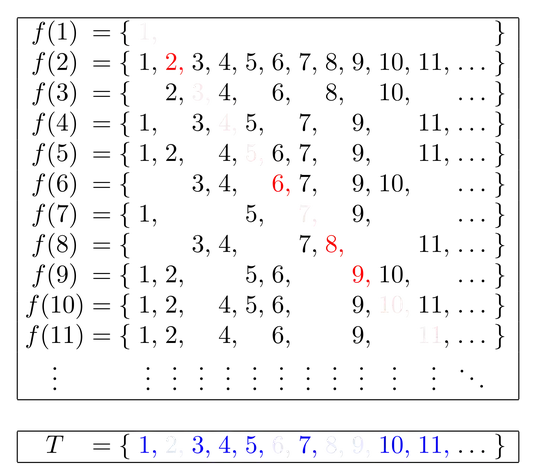A version of the Cantor's diagonalization argument is to show that there would be more fractional numbers between two integers than there are integer numbers.
For example, illustration of the generalized diagonal argument: The set $T = \{n∈ℕ: n∉f(n)\}$ at the bottom cannot occur anywhere in the range of $f:ℕ→P(ℕ)$. The example mapping $f$ happens to correspond to the example enumeration $s$ in the above picture.
My question is if a new number can be generated by changing each digit of the real number the at the same time the index can also be changed by adding 1 in the integer number. Then the new real number can be indexed with a new integer number at the last+1. So, the process can be continuous and there is no way to tell that some infinite number is larger than the other infinite number which seems violate Cantor's theorem.
What am I missing here?
